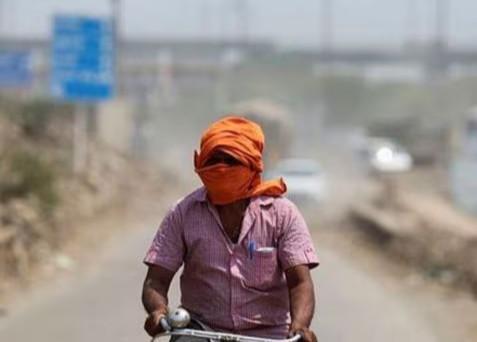
Extreme Heat Endangering Health & Productivity of Workers: Report
As the world grapples with the devastating effects of climate change, a recent report by the World Health Organisation (WHO) and World Meteorological Organisation (WMO) highlights a pressing concern that affects millions of workers worldwide. The report reveals that extreme heat is not only a threat to public health but also a significant productivity killer, especially for manual workers in agriculture, construction sectors, and vulnerable populations in developing countries.
According to the report, worker productivity drops by 2-3% for every degree above 20°C. This may seem like a minor decrease, but when extrapolated to global temperatures projected to rise by 1.5°C to 2°C by 2050, the impact on economic output and competitiveness becomes alarming.
The report highlights that manual workers in agriculture and construction sectors are particularly vulnerable to heat stress. These workers often toil outdoors for extended periods, exposed to direct sunlight and high temperatures. The heat can cause a range of health issues, including heatstroke, dehydration, and kidney dysfunction.
Heatstroke, a potentially life-threatening condition, occurs when the body’s temperature regulation system is overwhelmed, causing the body temperature to rise rapidly. Dehydration, a common consequence of heat stress, can lead to serious complications, including kidney damage and even death.
The elderly and children are also at risk due to their lower body mass and higher surface-to-volume ratio, making them more susceptible to heat stress. In developing countries, these vulnerable populations often lack access to basic healthcare services, making them more vulnerable to heat-related illnesses.
The report emphasizes that heat stress is not only a health concern but also a significant productivity issue. With temperatures projected to continue rising, the economic burden of heat stress is likely to increase, with estimates suggesting that heat-related productivity losses could reach $2-3 billion annually by 2030.
The WHO and WMO report provides a stark reminder of the urgent need for action to mitigate the effects of climate change. The organizations are calling for immediate measures to reduce greenhouse gas emissions and develop heat-resistant infrastructure to protect workers and communities.
In the short term, employers and policymakers can take several steps to reduce the risk of heat stress. These include:
- Implementing heat stress prevention and treatment protocols for workers.
- Providing regular breaks and access to cool water and shaded areas.
- Encouraging workers to wear light-colored, loose-fitting clothing and using personal protective equipment (PPE) to reduce heat gain.
- Conducting regular health checks and monitoring worker health.
- Implementing flexible work arrangements to reduce exposure to heat.
In conclusion, the report by WHO and WMO underscores the critical need for urgent action to address the impacts of extreme heat on worker health and productivity. As the world grapples with the challenges of climate change, it is essential that policymakers, employers, and individuals take immediate steps to reduce the risk of heat stress and protect the health and well-being of workers worldwide.
Source: https://repository.inshorts.com/articles/en/PTI/45d9bd2d-ff57-417c-9e5f-831344bb34b0






